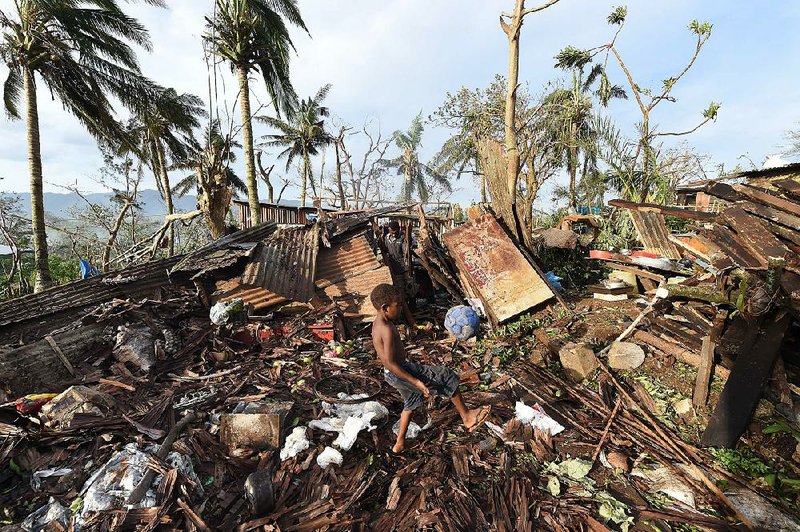PORT VILA, Vanuatu -- Relief workers rushed to deliver desperately needed food and water today to survivors living on Vanuatu's outer islands, after a cyclone wiped out entire villages and flattened vast swaths of the South Pacific nation's landscape.
Teams of aid workers and government officials were planning to send a boat packed with supplies to hard-hit Tanna Island, where aerial assessments showed more than 80 percent of homes or buildings had been partially or completely destroyed by Cyclone Pam.
Lack of food was a growing worry for those who survived the storm, which packed winds of 168 mph when it struck Saturday.
"Everyone in Tanna and other islands in the south, they really live subsistence lives, so they grow what they need for a short period. And the reality is that much of that would have been washed away by this storm," said Tom Perry, spokesman for the aid group CARE Australia. "That's a grave concern because we desperately need to get food to people soon."
Flyover crews who surveyed the outer islands saw a flattened landscape and widespread destruction, with survivors below trying to signal them for help, said Colin Collett van Rooyen, Vanuatu director for aid group Oxfam.
Teams of aid workers and government officials carrying medical and sanitation supplies, water, food and shelter equipment managed to land on Tanna and neighboring Erromango Island on Tuesday afternoon after being stymied in their efforts for days by poor weather and a breakdown in the nation's communications networks.
The two islands were directly in the path of the storm.
An aerial assessment showed extensive damage on Erromango, with communities ranging from 70 percent to 100 percent destroyed on the archipelago's fourth-largest island. On other islands, Collett van Rooyen said plane crews saw people had made big, white "H" marks on the ground or flashed mirrors to attract rescuers' attention.
The destruction on Tanna was significantly worse than in the nation's capital of Port Vila, where Pam destroyed or damaged 90 percent of the buildings, Perry said.
Vanuatu has a population of 267,000 people. About 47,000 people live in the capital.
"The airport was badly damaged, the hospital was badly damaged but still functioning. There's one doctor there at the moment," Perry said. "It's obviously a pretty trying situation."
The United Nations Office for the Coordination of Humanitarian Affairs reported that 11 people were confirmed dead, including five on Tanna, lowering its earlier report of 24 casualties after realizing some of the victims had been counted more than once. Officials with the National Disaster Management Office said they had no accurate figures on how many were dead, and aid agencies reported varying numbers.
The confusion reflects the difficulty of handling a disaster that struck whole communities on remote islands with a near-total communications blackout.
"Vanuatu is a challenging place at the best of times, in the sense of getting around and logistics," Perry said. "So a situation like this is pretty testing."
Poor weather and communications issues have hampered relief workers in reaching the outer islands for days. Most of the islands have no airports, and those that do have only small landing strips that are tricky for large supply planes to navigate. On the main island of Efate, bridges were down outside Port Vila, impeding vehicle traffic.
"There are over 80 islands that make up Vanuatu, and on a good, sunny day outside of cyclone season, it's difficult to get to many of them," Collett van Rooyen said. "Until today, the weather has been particularly cloudy, so even the surveillance flights would have had some difficulty picking up good imagery."
Officials hoped to restore communications to the islands within 48 hours, said Sebastian Rhodes Stampa, disaster coordinator for the United Nations humanitarian affairs office.
Information for this article was contributed by Kristen Gelineau and Edith M. Lederer of The Associated Press.
A Section on 03/18/2015

